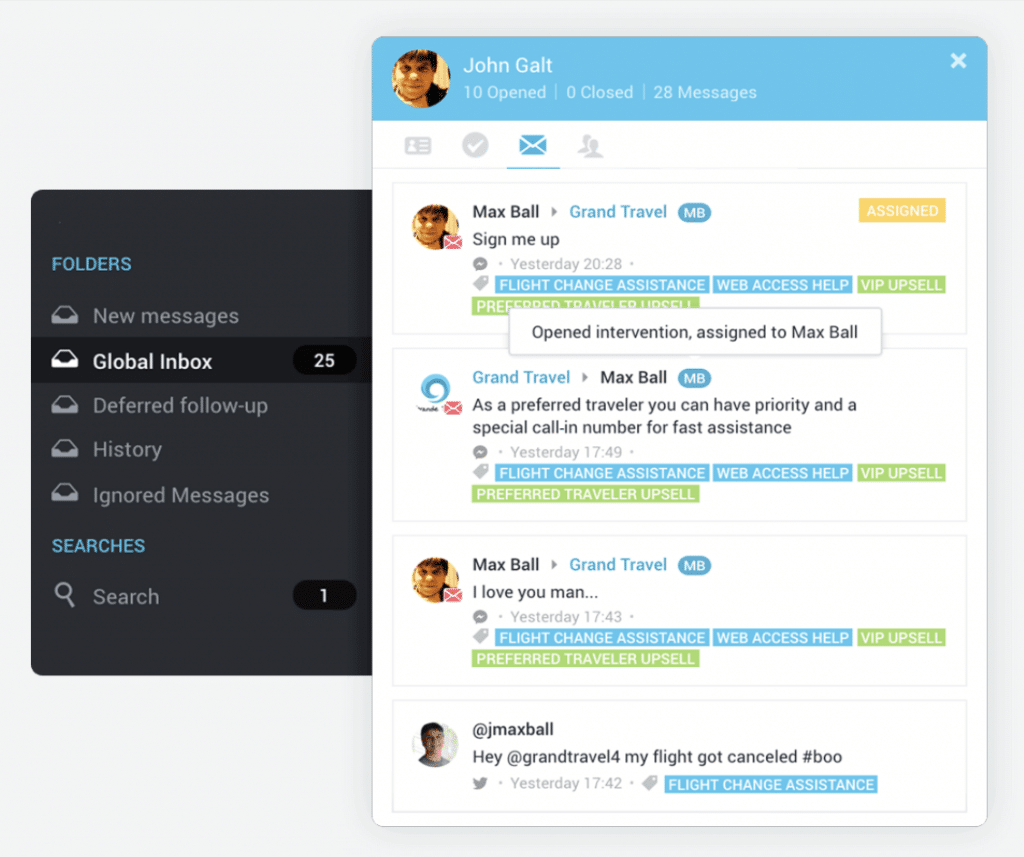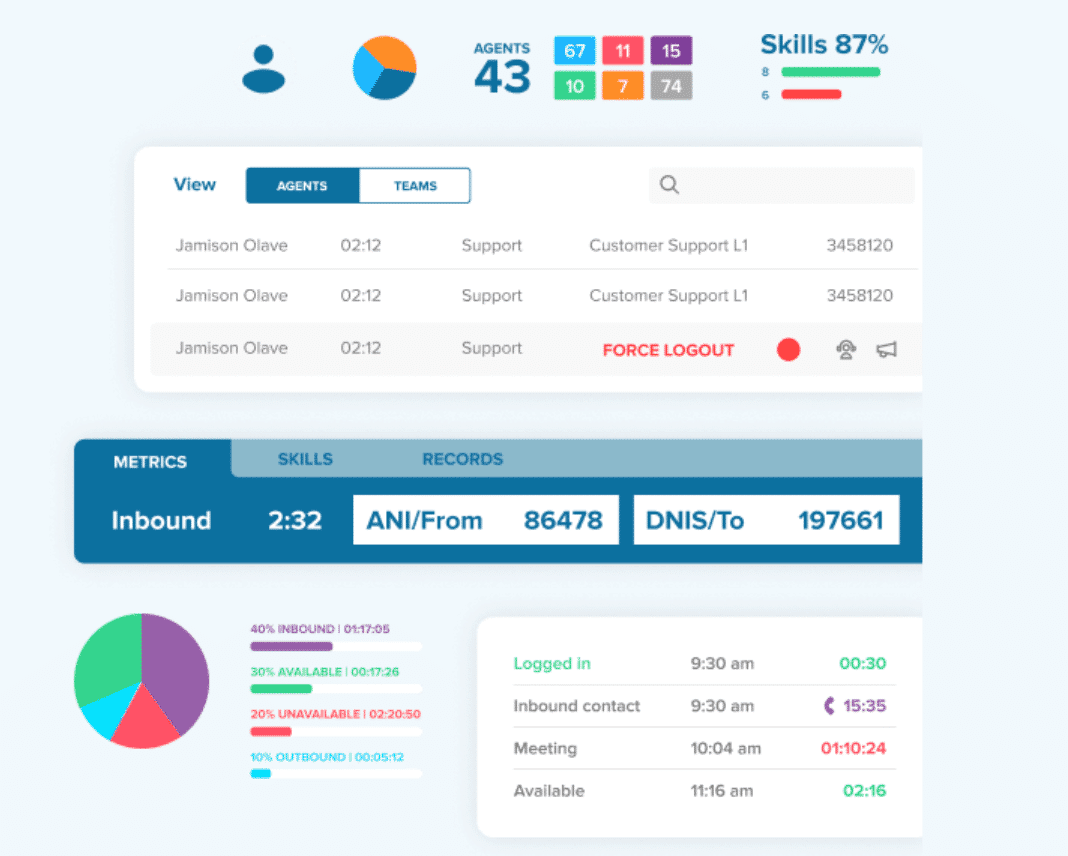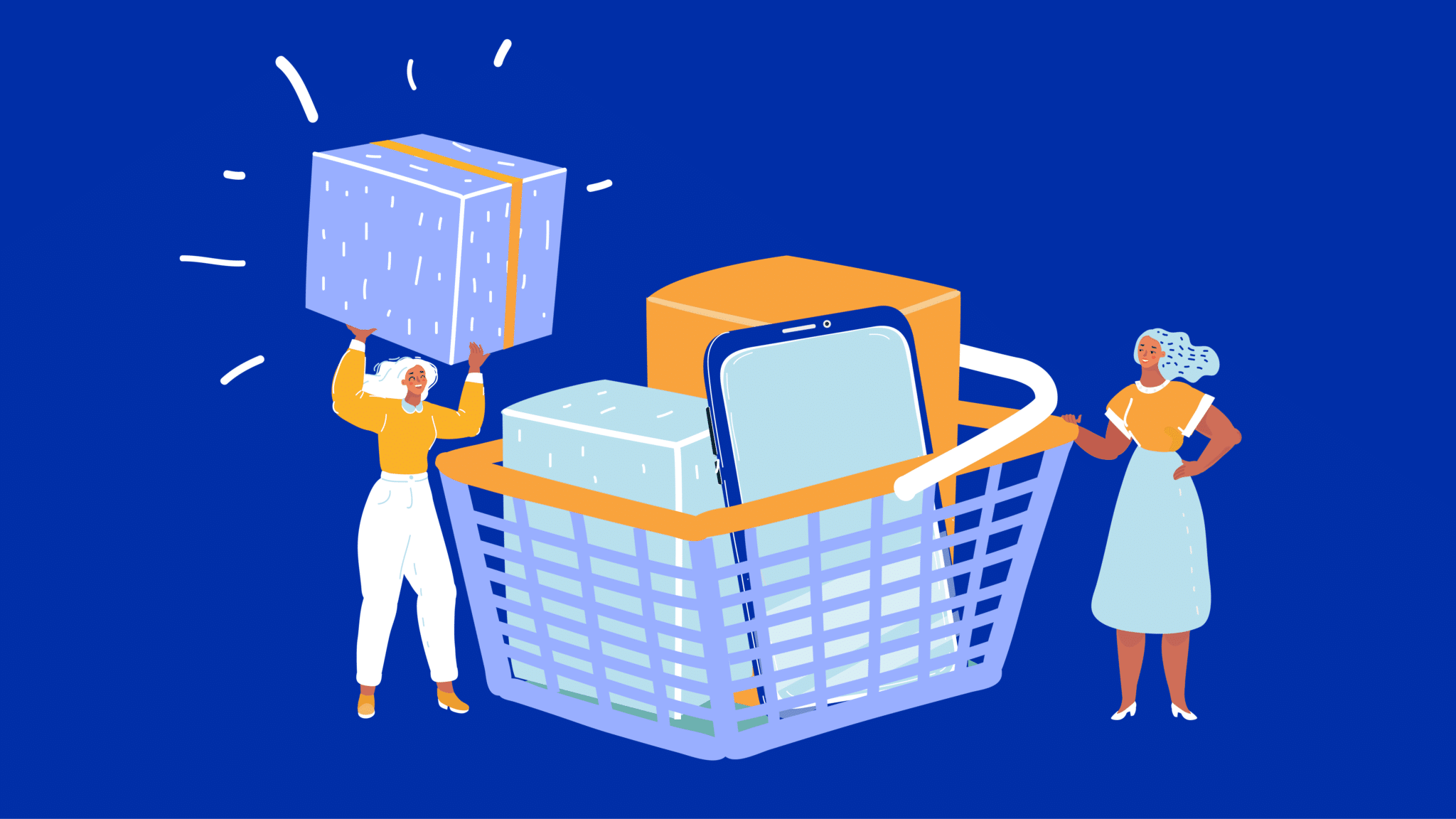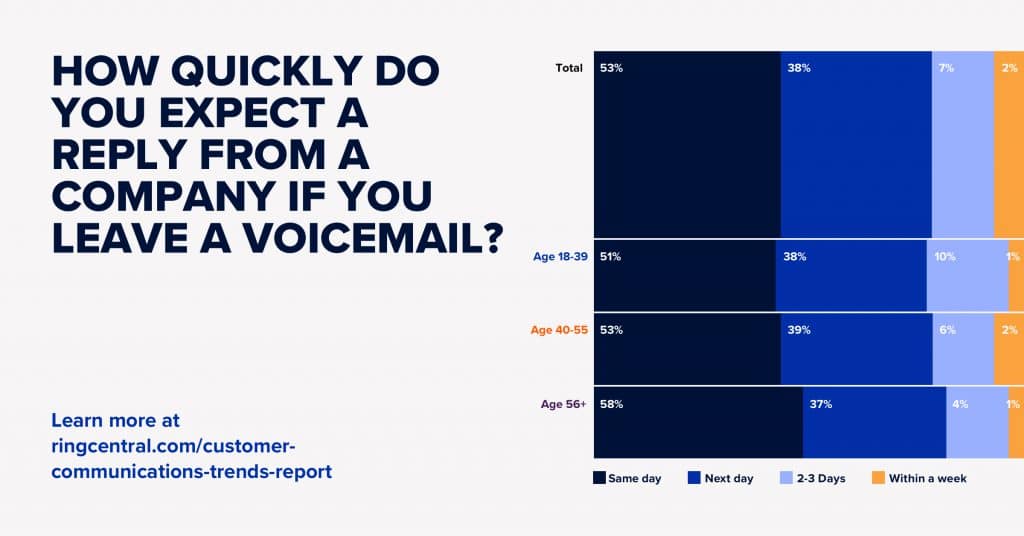With countless online outlets for customer feedback today (and with word of mouth being probably the #1 way businesses get new people in the door), it’s more important than ever to think about customer service as you build your business.
But what about customer experience? How does this concept differ from customer service, and how can you make your customers even happier and still stay within your budget?
What we’ll cover:
- The difference between customer service and customer experience
- Why customer service and customer experience matter
- 3 companies with great customer service
- How to measure customer experience
- 6 ways to provide better customer service and customer experience
⭐️⭐️⭐️⭐️⭐️ Ready to offer 5-star customer service? Get strategies for every stage of the customer journey with this free eBook.
What’s the difference between customer service & customer experience?
Imagine you’re on a cross-country road trip, keeping a journal of the sites you see and the people you meet. Along the way, you stop for all kinds of reasons: to get gas, grab a bite at a roadside diner, or crash for the night at a motel.
Every time you stop, there’s someone there to help. They fill your tank, bring your food, or check you into a room. They each offer their own unique personality and approach to helping you get where you’re going. At the end of your trip, you read your journal entries and realize what an amazing time you had, and how those individual people played a part along the way.
Think of customer service as the individual interactions you have with a company: the assistance they provide before, during, and after a purchase. Customer experience is your overall journey with that company, and how it made you feel.
Every interaction a customer has with your company will shape their overall experience, and a customer’s overall experience shapes how they talk about your company to the people in their lives.
Why customer service and customer experience matter
You’ve likely had both positive and negative customer service experiences, and you know how that affects your own opinion of a business. Here are some stats that show just how important customer service and experience really are:
- When asked how soon they expect a reply from a business after leaving a voicemail message, 91% of respondents said they expect a follow-up either the same day or the next day:
- “Customers who have enjoyed a good overall customer experience are three and a half times more likely to repurchase and five times more likely to recommend the company to friends and family than if they had a very poor experience.” Source: Lumoa, Customer Experience Statistics for 2019
- “Customer-centric companies are 60% more profitable than companies that aren’t.” Source: Hubspot, 16 Customer Experience Trends & Stats That’ll Define The Next Year
- Bad news travels fast: “54% shared bad experiences with more than five people and 33% shared good experiences with more than five people.” Source: Zendesk
3 companies with great customer service
There are lots of inspiring, great customer service stories out there from a whole range of companies. Here are a few creative examples to get you thinking about how you can stand out in customer experience!
Wistia
Wistia decided to think outside the box when it came to answering their customers’ questions, by using their very own video technology. How can you use your business’s strengths to improve customer experience?
Zappos
When a customer made a big and expensive mistake, Zappos went the extra mile to help them make it right. Where can you go the extra mile, while still balancing the budget?
[ebook-download title=”How customer-obsessed is your business?” link=”https://netstorage.ringcentral.com/documents/quiz_how_customer_obsessed_your_business.pdf” cta-text=”Take the quiz” src=””]
Lego
A little boy lost his new favorite toy, and Lego used imagination to make him smile. How can you reward this kind of creativity on your service team?
How to measure customer experience
There are many ways you can measure how customers feel about their journey with your business. Here are just a few:
- Positive or negative reviews on sites like Yelp, Google, and even Facebook. What’s your ratio of good to not-so-hot? (Here are a few customer review examples.)
- Business referrals from existing customers. Are you getting a ton, or none?
- Survey responses. On a scale of 1 to 5, how much do your customers love you?
- Customer retention rate: How many customers can you keep over a period of time?
- Churn, or loss of customers. What’s making them head for the hills?
6 ways to provide better customer service and customer experience
1. Make it easy. Put yourself in your customer’s shoes: they’re likely contacting you in the middle of their day while juggling work, family, and more. Imagine emailing a company with a problem on your 30-minute lunch break, only to be told you then have to call the office and sit on hold or be bounced around from one representative to the next, only to have nothing solved by the time you hang up. Would you buy from that company again?
The fewer steps it takes to get a customer from problem to solution, the better.
2. Become a one-stop shop. A huge frustration for customers is being bounced from one platform to the next: if they email, they’re told they have to call a different department, or vice versa. But when your whole organization works within a single, streamlined digital service platform, customers can reach out however they prefer: phone, email, even text message–and receive a response without the runaround:

3. Keep it human, whenever possible. Email and chat are probably the more popular ways for your customers to reach you. So when they do call, that usually means they have a question only a real conversation will solve, like a complicated technical issue or emergency situation. Look into cloud-based phone solutions that let your service team answer calls whenever, wherever, so you never leave your customers on hold.
4. Be proactive. Don’t wait for problems to bubble up. Outbound customer engagement is a great way to take the temperature on (and positively impact!) customer experience. Reach out with a simple survey about their recent interaction, or keep it less formal with a friendly check-in email. Either way, your customers will be glad you went the extra mile.
5. Don’t sleep on the metrics. Data isn’t just for sales and marketing! Today you can also monitor your customer service team’s workload and efficiency, so you can evaluate how to get customers the help they need more quickly. Check in on wait time, call volume, talk time, and more.Some customer service platforms like RingCentral come with reports that have customizable call-monitoring dashboards, which bring the numbers to you for easy analysis. Look for trends in the call topics to find out what your customers need most, and make actionable plans to improve on what you learn from this data. Then, share these updates with your customers, so they know you’re listening!

6. Happy employees = better customer service and experience. An informed team is a capable team, and a capable team has more positive interactions with your customers, and this makes everyone happy! Spend time on upfront and ongoing training of your customer experience team, and give them the tools they need to be successful.
Invest in an all-in-one customer management software to cut down on frustration and empower your team to deliver excellent service.
Customer service vs customer experience: it’s time to get obsessed!
“Customer-obsessed” companies consider every interaction an important part of the journey, both for their business and their customers. One crucial piece of this puzzle is making sure your team has the knowledge and tools they need to answer questions and solve problems, no matter how big or small.
Want to learn more about how to build a modern digital customer service strategy? Grab the free ebook here.
Originally published Mar 02, 2020, updated Jul 24, 2024







